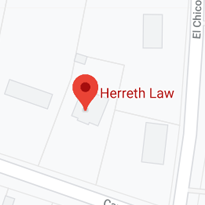 A box truck apparently rear-ended a Corvette on the eastbound side of the freeway, killing the Corvette driver almost instantly.
A box truck apparently rear-ended a Corvette on the eastbound side of the freeway, killing the Corvette driver almost instantly.
According to police and witnesses, the Corvette driver was only travelling about 20mph in the carpool lane, because of mechanical issues. The box truck driver apparently slammed into the Corvette at freeway speeds, crushing the sportscar and killing its driver.
None of the names were released.
Issues in Rear-End Crash Cases
Emergency responders always fault the rear-end driver for crashes like the one described above. But there is a difference between fault at the scene and legal responsibility for damages. So, whatever your role was in the crash, you need a diligent Fort Worth personal injury attorney.
The contributory negligence doctrine often applies in these situations. Many times, in rear-end crashes, both drivers were at fault. In the above story, the Corvette driver arguably should have pulled over instead of obstructing traffic. That’s both the reasonable and legal thing to do. If that’s the case, a Tarrant County jury must divide fault between the two drivers.
Texas is a modified comparative fault state with a 51 percent bar. So, even if the victim was 49 percent responsible for the crash, the tortfeasor (negligent driver) is still liable for a proportional share of damages.
The last clear chance rule sometimes comes up as well. This doctrine completely excuses liability if the victim did not avoid a crash when s/he had a reasonable chance to do so. For example, if the Corvette driver saw the truck coming up fast, the Corvette driver might have been able to change lanes and avoid the wreck.
However, there’s a big difference between the last clear chance and any possible chance. Quite often, weather, traffic, or other conditions make such emergency maneuvers impossible.
Third Party Liability
When a commercial truck is involved in a crash, the victim often sustains catastrophic losses. If the individual tortfeasor does not have enough insurance coverage to provide fair compensation, third party liability often give the victim an additional source of recovery.
Respondeat superior (“let the master answer”) is probably the most common employer liability theory. It applies if the tortfeasor:
-
Was an employee
-
Who was working within the scope of employment at the time.
Texas courts define both these elements in broad, victim-friendly terms. For example, “employees” are not just people who take home regular paychecks. Owner-operators, independent contractors, and even unpaid volunteers are employees in most situations.
If the tortfeasor leased the truck from U-Haul or another company, the negligent entrustment rule may apply. This doctirne holds owners liable for damages if they allow incompetent drivers to use their vehicles. Commercial negligent entrustment cases work a bit differently, because of the Graves Amendment.
Even seemingly straightforward car crashes involve complex legal issues. For a free consultation with an experienced personal injury attorney in Fort Worth, contact Herreth Law. We do not charge upfront legal fees in most negligence cases.

